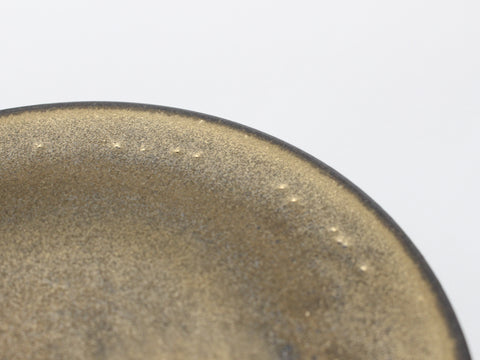Have you ever heard the phrase, “a container with good "KESHIKI”? In the world of pottery, the different expressions and changes to the clay or glaze created by the flames of a kiln are called “KESHIKI”. The beauty of “KESHIKI” was apparently discovered in ancient times by masters of the tea ceremony, and it is said to be a uniquely Japanese “aesthetic sense”.
It is said that 600 years ago, around the year 1,400 during the Muromachi period, when China was the world leader in ceramics, elaborate, precise and perfect works were considered good, and no value was placed on distortions or accidental changes. On the other hand, in Japan, masters of the tea ceremony and others found beauty in irregularities and distortions in color and shape, changes in the glaze, etc. The containers that bore these were hailed as tasteful and timeless, with their particular attributes eventually coming to be known as their “KESHIKI”, a uniquely Japanese aesthetic sense. Here, we will be introducing some of the main representative “KESHIKI”.
Penetrations (Kannyu)
Cracks that form on the surface of a container’s glaze are called penetrations (“kannyu”). They express themselves in various different ways depending on the angle of the light and have been one of the main attractions of such containers since ancient times. Penetrations are created by the difference in expansion and contraction between the base material and the glaze. When pottery is removed from the kiln after firing, the base material and glaze shrink due to the temperature difference with the outside air. Basically, the glaze shrinks more, causing cracks, or “penetrations” to appear on its surface.

By the way, in Karatsu ware, there is a type of glaze which contains intentional penetrations, called “jakatsuyu” (“snake-scorpion glaze”). In it, the surface of a black glaze is covered with a feldspar glaze before it is fired. This causes the feldspar glaze to shrink more than the black glaze, revealing the black gaze through the gaps caused by the shrinkage and creating a complex and unique “KESHIKI”. The name “jakatsuyu” (“snake-scorpion glaze”) comes from the fact that the KESHIKI created by these shrunken penetrations looks like outer skin of a snake or scorpion.

Potter’s Wheel Marks (Rokurome)
When the potter’s wheel is rotated and the clay is pulled up with the fingers, traces of the fingers are left on its surface in the form of streaks as the wheel is turned. In addition to finger marks, there are also marks left by tools such as spatulas. These become one of the main attractions, a “KESHIKI” of such containers. Actually, potter’s wheel marks are never placed on the inside of a vessel and, even if they were, wouldn’t be prominent enough to be noticed. The majority are placed on the outside of a vessel as a form of expression. What’s more, they are not evenly distributed, but have a moving, circular shape through which the author’s personality and sense is visible.

Eye Marks (Meato)
These marks can be said to be a traditional design created during the kiln firing production process. They are called “eye marks” as shown in the photo below, which shows three small clay spots in the center of the vessel. They are created by inserting a small piece of refractory clay between two vessels to prevent them from welding together when they are fired in layers. These marks are handmade and are rarely seen on mass-produced containers.

Stone Bombs (Ishihaze)
You may be wondering whether this is also a “KESHIKI”. The answer is that yes, stone bombs, or “ishihaze” are a wonderful KESHIKI. Artists often seek serendipity when creating pottery. This is because they like unintended results, such as the changes that occur by chance through a kiln’s flames. Stone bombs are one of these. The pebbles contained in the base material become exposed as it burns during the firing process. It is said that they became prized by masters of the tea ceremony as a form of KESHIKI.

Pinholes
The fact that there are small dents in a bowl is part of its flavor. Glazed containers sometimes have dents of about 1mm called pinholes. This is a phenomenon caused when organic substances attached to the fabric are baked when the glaze is applied, thus creating small dents. In handmade pottery, pinholes are seen as a natural design that sometimes occurs in the kiln, and are enjoyed as part of the flavor and a “KESHIKI” of such handmade containers.

“KESHIKI” are the charm of pottery. Once you know about them, the way you look at pottery changes, and your appreciation for it becomes even deeper.

